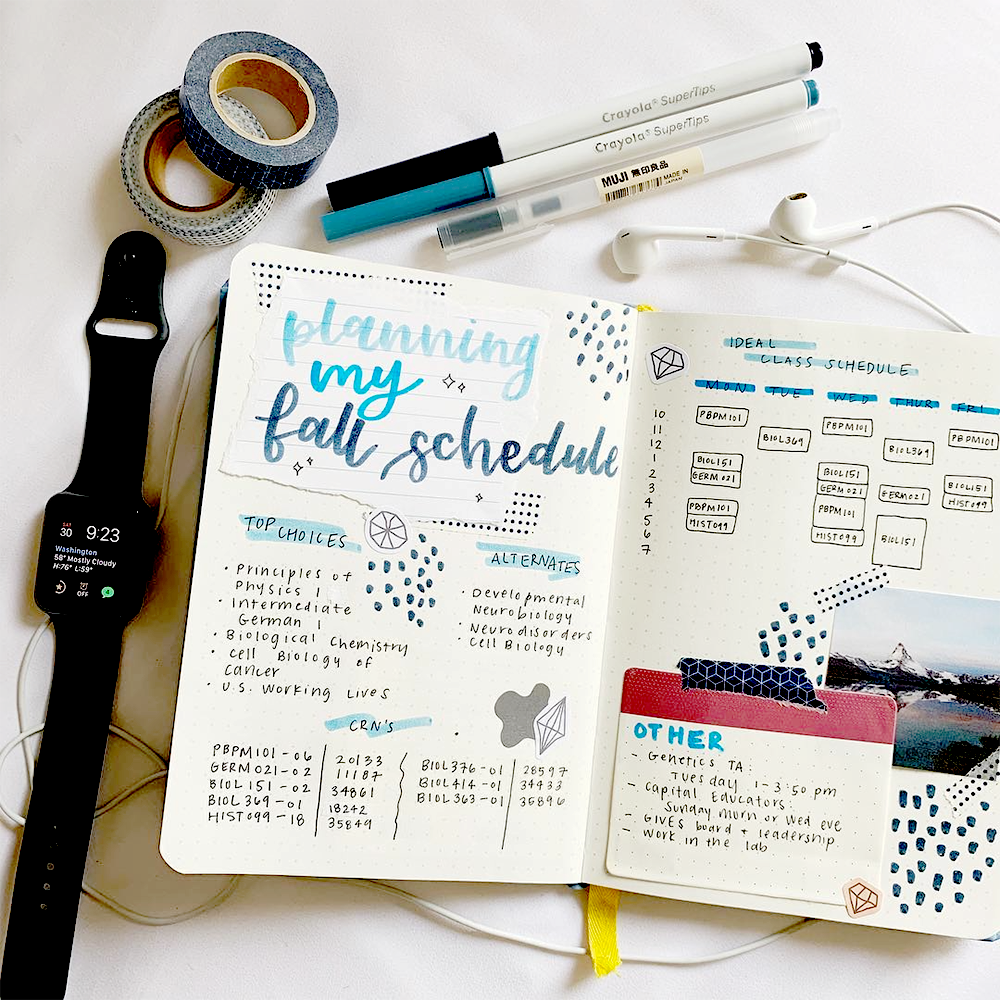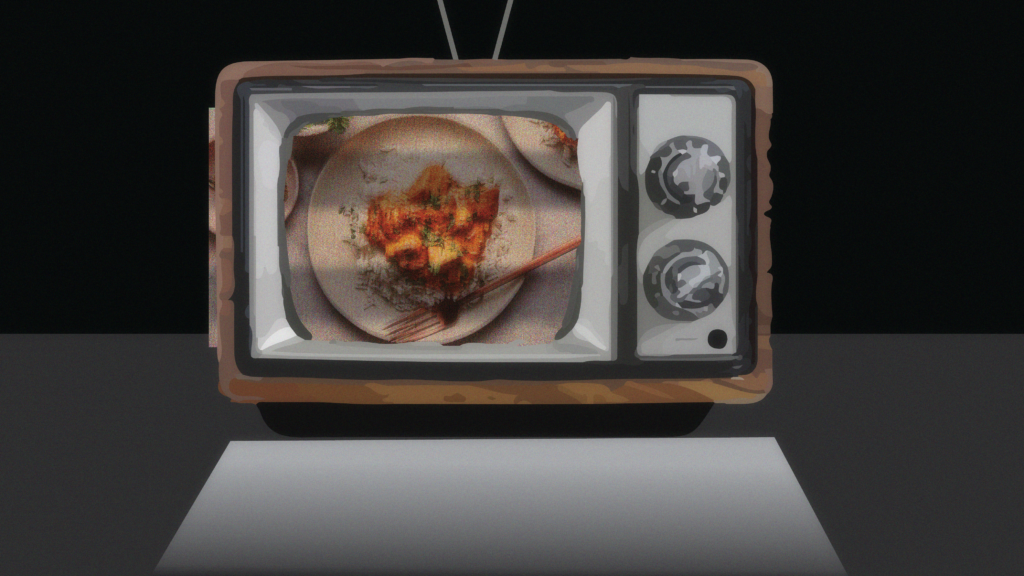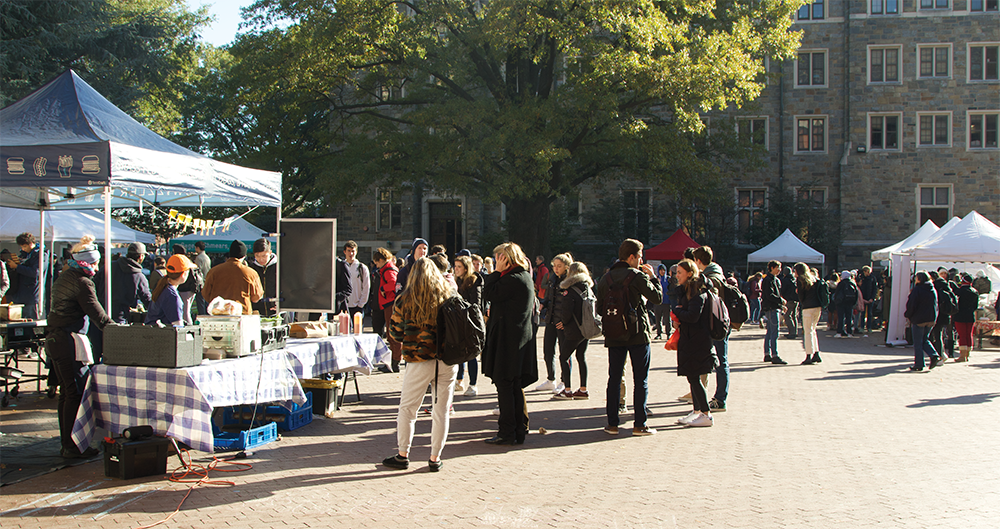The practice of crafting beautiful, meticulous notes and planners gained widespread traction online over the past five years, especially on online blogging platforms like Tumblr and Pinterest. Bullet journaling serves as a method of organization, and its inherently adaptable nature presents ample opportunities for personal, creative agendas that document more than just homework and due dates.
Students have to make their bullet journals serve two purposes: not only to study more efficiently, but also to function as a valuable creative outlet in and of themselves. The constant balancing of these two goals creates the main tension of the burgeoning study habit, but some students at Georgetown University have devoted their time and energy to the practice of bullet journaling for years.
Committing to the Practice
The jump from being an ordinary note-taker to a full-on bullet journaler takes concerted effort on students’ parts to gather the materials needed and start making spreads, the highly customized pages in a bullet journal that hold information about the upcoming month or week.
For some bullet journalers, this initial push comes from seeing other study bloggers posting their own bullet online and learning from the resources available, according to Stephanie Dekkers (NHS ’21), who has kept a bullet journal since her junior year of high school.
“I saw a photo on Instagram or Pinterest in high school, and decided to go out and buy a journal and learn a little bit more about the method,” Dekkers wrote in an email to The Hoya. “Ryder Carrol, the creator of the bullet journal had a starters video on the internet that I watched, but I realized there were a lot of components I knew I wasn’t going to use or didn’t feel I needed.’”
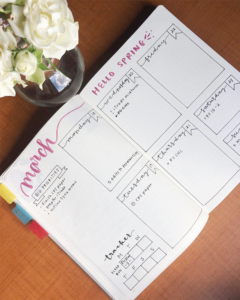
Still, getting into the craft and turning it into a meaningful, productive habit takes dedication and experimentation, according to Lauren Olosky (SFS ’21), who has bullet journaled since her sophomore year of high school and runs a semiactive bullet journal account on Instagram titled @lauren.olosky.lettering.
“My journal started out where I would look at Pinterest and see how other people were doing it, notice different elements of things that I like and bring all of them together and try them out,” Olosky said in an interview with The Hoya.
Once they have established a certain comfort in the world of bullet journaling, journalers explore various stationary and crafting brands to find their favorite products, which can range in price from $1.50 per Muji capped gel pen to $35 for a larger high-end notebook, to create spreads with, according to Dekkers.
“I’m very much a minimalist so I committed to the 0.5 Muji black pen as my go-to for absolutely everything I do in my journal,” Dekkers wrote. “I also use a classic Leuchtturm [notebook] every year for my bullet journal, depending where you buy it from it’s about 15 dollars. The paper is super thick and bleed proof, and it has a hard binding which is good for protecting your journal, considering I take mine everywhere I go.”
Other journalers play with different pen and notebook brands to try out different styles and layouts and see what best suits them based on what they hope to achieve aesthetically with their journal, according to Olosky.
“I usually don’t incorporate a lot of colors … I like to keep it more minimalistic because it is so functional for me,” Olosky said. “For my lines, I use [Pigma] Micron [pens] because they don’t smear or bleed and they’re good for setting up the grids so you’re not rubbing or smearing the ink.”
However, creative experimentation does not always mean that the most popular and expensive supplies are immediately necessary, according to Ethan Missigman (COL ’21), who runs a study blog on Instagram titled @ethanstudies and has been bullet journaling since the summer before his freshman year at Georgetown.
“When I first started, I literally just used loose leaf paper and a blank journal I got at Walmart because that was me just practicing and seeing what I liked or did not like,” Missigman said in an interview with The Hoya. “That helped me figure out things like, ‘I enjoy taking notes on graph paper,’ and from there I branched out.”
Finding and Sharing Creativity
At the heart of study blogging and bullet journaling lies an aesthetic project that can both enrich students’ lives and provide opportunities to share their talents with a wider community, potentially attracting a following of like-minded peers.
Given the hectic schedule of a student at Georgetown, bullet journaling and beautifying class notes is a method of doing work while also cultivating creativity, according to Missigman.
“Making my bullet journal and making my notes look nice actually gives me a reason to want to do them,” Missigman said. “I don’t mind my assignments because it’s also a source of relaxation for me. I don’t have time to draw and paint like I did in high school, so I do this instead to have a creative outlet.”
However, the creative freedom that bullet journaling offers can also create artist’s block, stifling the process and making the creative aspect the entire focus, according to Olosky.
“I feel like if I start incorporating a lot of color, I tend to have a perfectionist personality about it so I tend to get more nervous about messing it up,” Olosky said. “Then, it’s not as useful for me.”
The eye-pleasing visuals of bullet journaling and taking beautiful notes lend themselves well to being shared in photos online of spreads and the supplies used to make them. A cursory Google search of the word “‘studyblr”’ will bring up the countless photos of neatly written and brightly colored notebook pages of class notes that make up the world of study blogging.
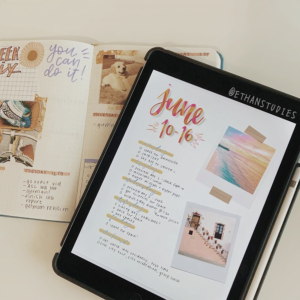
The pressure to be creative and consistent for a wider audience online also requires that journalers make commitments to their accounts as well as their journals, according to Missigman.
“I do notice that I don’t get as many followers when I don’t post regularly,” Missigman said. “I tend to take four to five pictures at a time and then set up the posts as drafts for the whole weeks so I don’t have to take time between clubs and classes to find good lighting, take a picture and edit it.”
Even with this added pressure and spotlight, plenty of joy and meaning can come out of developing a journaling and note-taking practice on its own, according to Missigman.
“There’s some that are in it for the followers and have like millions of followers, but I am fine just having people that I know from Georgetown follow me and some people out in the bigger community,” Missigman said. “At the end of the day, it’s really for me — not anyone else.”
Managing Time Effectively
Like all study habits or aesthetic ventures, devoting too much time to bullet journaling or beautifying notes can bring diminishing returns and ultimately hurt academic performance and wellbeing. As such, bullet journalers have to be conscientious of how they use their time designing and filling out spreads.
When new spreads have to be planned each week and entire chapters of textbooks need to get condensed into neatly aligned notes, the time commitment can cause stress, according to Missigman.
“The one negative thing about is having to take that extra time to make my notes look like this,” Missigman said. “It can be kind of draining.”
Though bullet journaling can be taken to a counterproductive extreme, creating new spreads week after week makes the practice more time-efficient and therapeutic for Olosky.
“Right now, I’ve kind of nailed down a system that I like that I’ve tweaked over the years,” Olosky said. “Now I have it down to 20 to 30 minutes, if even that, for my spread each week.”
The open structure of bullet journaling also allows students the flexibility to adjust their own commitments to filling out their spreads, based on their own schedule and headspace for the week, according to Dekkers.
“When I have time, I set up my weekly layouts with fun frames and shapes and look up ideas online,” Dekkers said. “When I don’t have time, I can write the day of each week in cursive and feel that I am just as organized as when I put a lot of time into it.”
At its core, bullet journaling and other forms of aesthetic studying provide a personalized way to tackle assignments, set goals and create a space for reflection, according to Dekkers.
“To me, it’s mostly how much of my life I am able to represent in my bullet journal that excites me.” Dekkers said. “I have one for each academic year so I get to watch as my artistic skill, sense of self and life grows and changes through all of these journals.”


